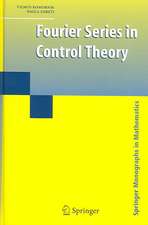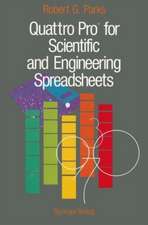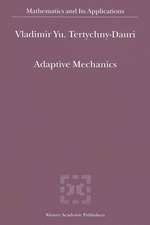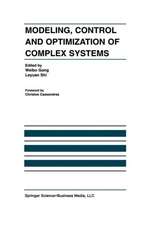Nonlinearities and Synchronization in Musical Acoustics and Music Psychology: Current Research in Systematic Musicology, cartea 2
Autor Rolf Baderen Limba Engleză Paperback – 7 mar 2015
| Toate formatele și edițiile | Preț | Express |
|---|---|---|
| Paperback (1) | 953.65 lei 43-57 zile | |
| Springer Berlin, Heidelberg – 7 mar 2015 | 953.65 lei 43-57 zile | |
| Hardback (1) | 958.38 lei 43-57 zile | |
| Springer Berlin, Heidelberg – 2 feb 2013 | 958.38 lei 43-57 zile |
Preț: 953.65 lei
Preț vechi: 1162.99 lei
-18% Nou
Puncte Express: 1430
Preț estimativ în valută:
182.54€ • 198.34$ • 153.43£
182.54€ • 198.34$ • 153.43£
Carte tipărită la comandă
Livrare economică 21 aprilie-05 mai
Preluare comenzi: 021 569.72.76
Specificații
ISBN-13: 9783642430244
ISBN-10: 3642430244
Pagini: 492
Ilustrații: XXXI, 458 p. 202 illus., 28 illus. in color.
Dimensiuni: 155 x 235 x 25 mm
Greutate: 0.68 kg
Ediția:2013
Editura: Springer Berlin, Heidelberg
Colecția Springer
Seria Current Research in Systematic Musicology
Locul publicării:Berlin, Heidelberg, Germany
ISBN-10: 3642430244
Pagini: 492
Ilustrații: XXXI, 458 p. 202 illus., 28 illus. in color.
Dimensiuni: 155 x 235 x 25 mm
Greutate: 0.68 kg
Ediția:2013
Editura: Springer Berlin, Heidelberg
Colecția Springer
Seria Current Research in Systematic Musicology
Locul publicării:Berlin, Heidelberg, Germany
Cuprins
Introduction.- Signal Processing.- Frequency Representations.- Embedding Representations.- Physical Modelling.- Musical Acoustics.- Musical Instruments.- Impulse Pattern Formulation.- Examples of Impulse Pattern Formulation.- Music Psychology.- Psychoacoustic.- Timbre.- Rhythm.- Pitch, Melody, Tonality.- CD Tracks.
Textul de pe ultima copertă
Nonlinearities are a crucial and founding principle in nearly all musical systems, may they be musical instruments, timbre or rhythm perception and production, or neural networks of music perception. This volume gives an overview about present and past research in these fields. In Musical Acoustics, on the one hand the nonlinearities in musical instruments often produce the musically interesting features. On the other, musical instruments are nonlinear by nature, and tone production is the result of synchronization and self-organization within the instruments. Furthermore, as nearly all musical instruments are driven by impulses an Impulse Pattern Formulation (IPF) is suggested, an iterative framework holding for all musical instruments. It appears that this framework is able to reproduce the complex and perceptionally most salient initial transients of musical instruments. In Music Psychology, nonlinearities are present in all areas of musical features, like pitch, timbre, or rhythm perception. In terms of rhythm production and motion, self-organizing models are the only ones able to explain sudden phase-transitions while tapping. Self-organizing neural nets, both of the Kohonen and the connectionist types are able to reproduce tonality, timbre similarities, or phrases. The volume also gives an overview about the signal processing tools suitable to analyze sounds in a nonlinear way, both in the Fourier-domain, like Wavelets or correlograms, and in the phase-space domain, like fractal dimensions or information structures. Furthermore, it gives an introduction to Physical Modeling of musical instruments using Finite-Element and Finite-Difference methods, to cope with the high complexity of instrument bodies and wave couplings. It appears, that most musical systems are self-organized ones, and only therefore able to produce all unexpected and interesting features of music, both in production and perception.
Caracteristici
Fascinating and colourful book bringing new insights to Musical Acoustics and Music Psychology from nonlinear dynamics Recent research on nonlinearities and synchronization in Musical Acoustics and Music Psychology Written by a leading expert in the field





































